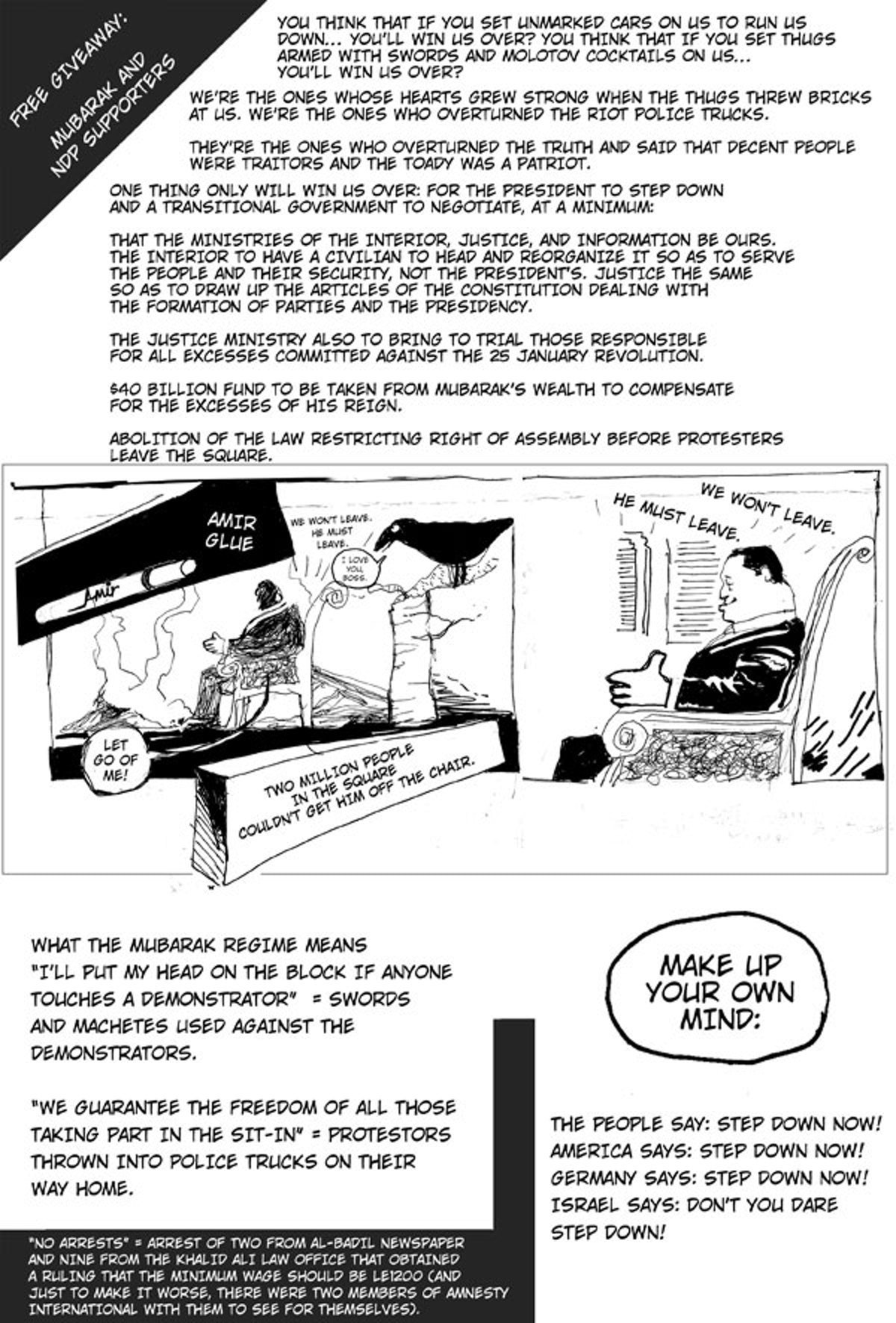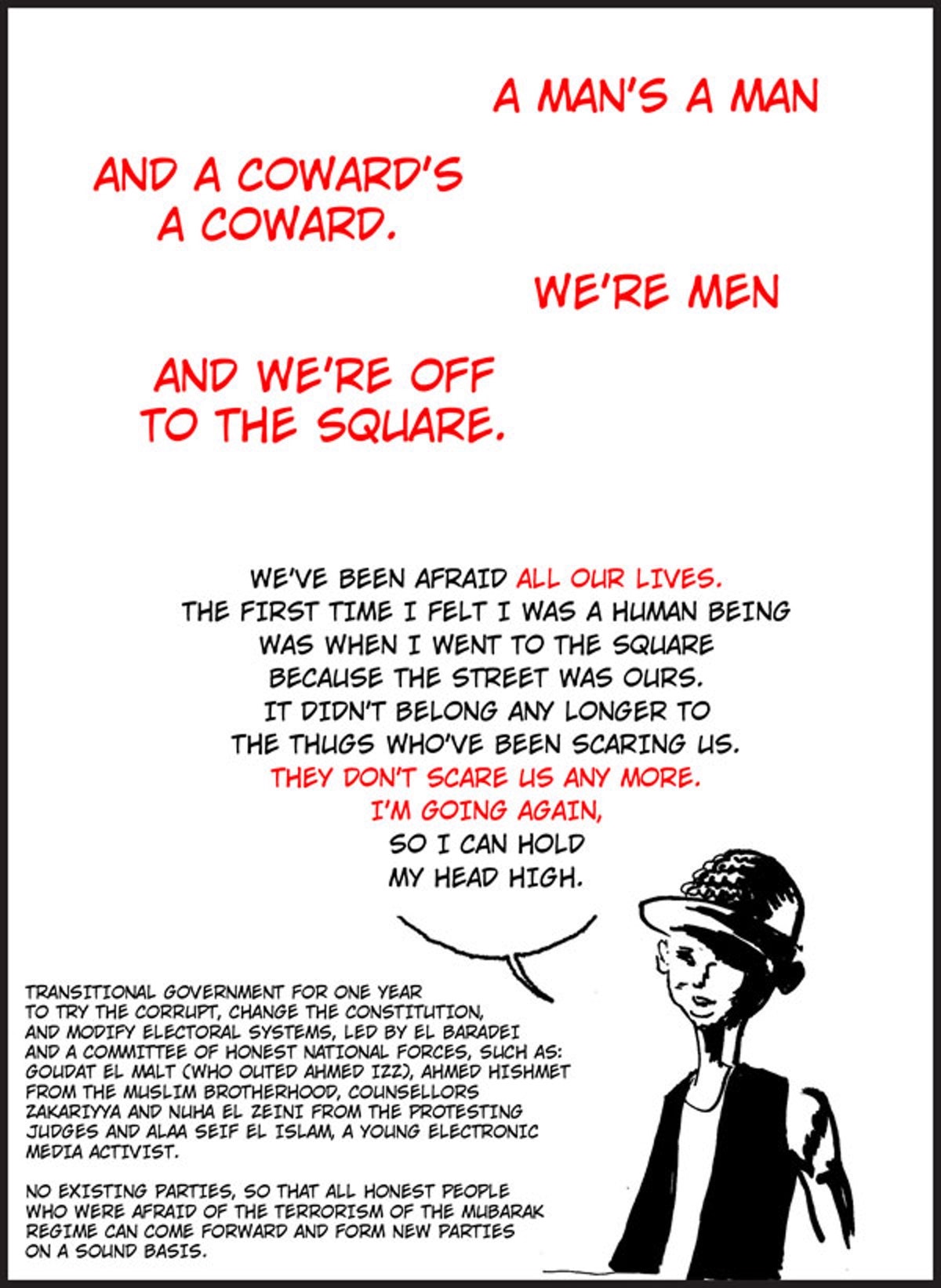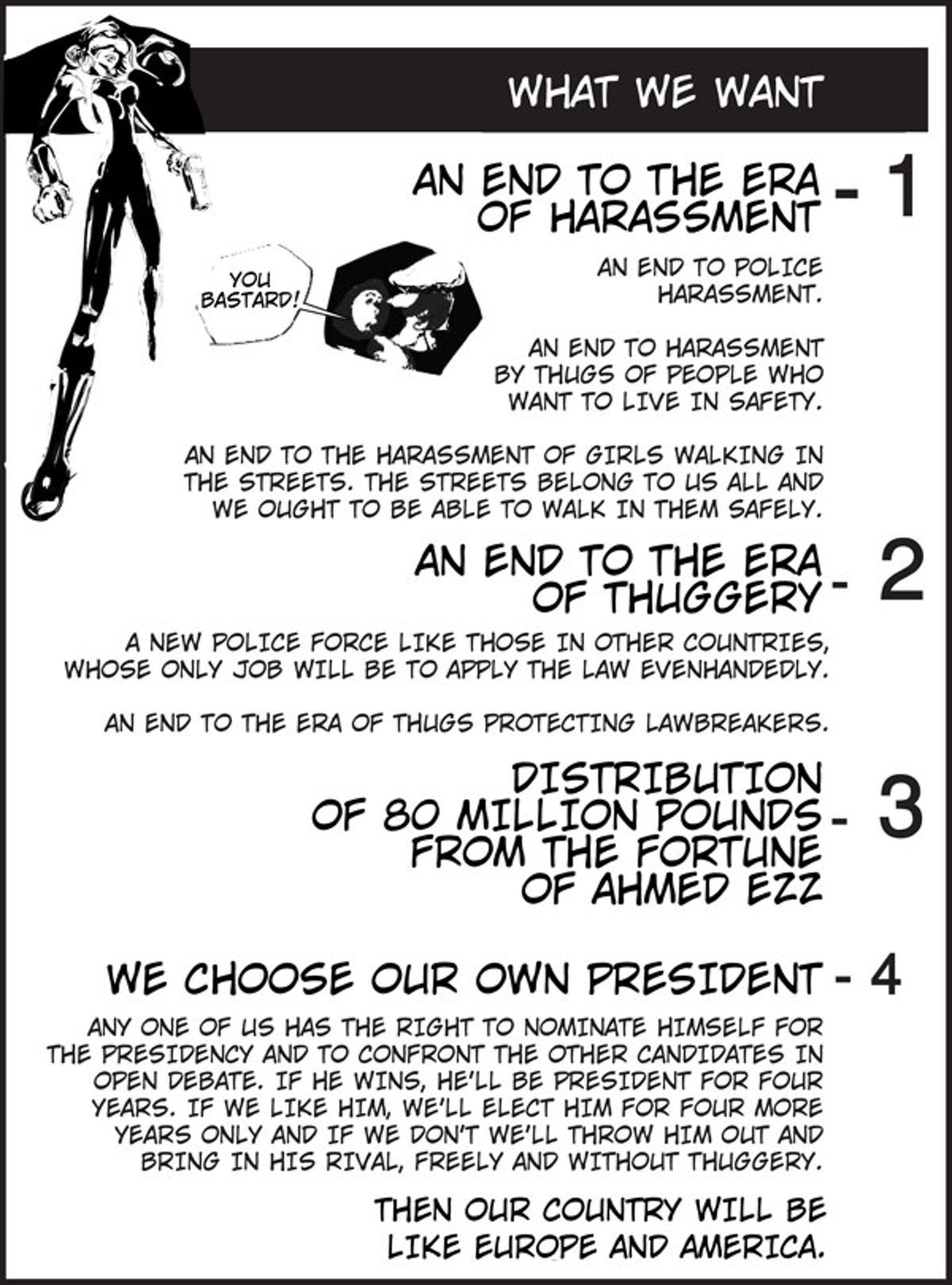You think that if you set unmarked cars on us to run us down… you’ll win us over? You think that if you set thugs armed with swords and Molotov cocktails on us…you’ll win us over?
We’re the ones whose hearts grew strong when the thugs threw bricks at us. We’re the ones who overturned the riot police trucks.
They’re the ones who overturned the truth and said that decent people were traitors and the toady was a patriot.
One thing only will win us over: for the president to step down and a transitional government to negotiate, at a minimum:
That the ministries of the interior, justice, and information be ours.
The interior to have a civilian to head and reorganize it so as to serve the people and their security, not the president’s, justice the same so as to draw up the articles of the constitution dealing with the formation of parties and the presidency.
The justice ministry also to bring to trial those responsible for all excesses committed against the 25 January Revolution.
$40 billion fund to be taken from Mubarak’s wealth to compensate for the excesses of his reign.
Abolition of the law restricting right of assembly before protesters leave the square.
[Amir Glue]
[We won’t leave, he must leave.]
Crow: I love you, boss.
[Let go of me!]
[We won’t leave. He must leave.]
What the Mubarak Regime means
“I’ll put my head on the block if anyone touches a demonstrator” = swords and machetes used against the demonstrators.
“We guarantee the freedom of all those taking part in the sit-in” = protestors thrown into police trucks on their way home.
“No arrests” = arrest of two from Al-Badil newspaper and nine from Khalid Ali Law Office that obtained a ruling that the minimum wage should be LE 1200 (and just to make it worse, there were two members of Amnesty International with them to see for themselves).
Make up your own mind:
The people say: Step down now!
America says: Step down now!
Germany says: Step down now!
Israel says: Don’t you dare step down!
A man’s a man
And a coward’s a coward
We’re men
and we’re off to the square.
We’ve been afraid all our lives. The first time I felt I was a human being was when I went to the square because the street was ours. It didn’t belong any longer to the thugs who’ve been scaring us. They don’t scare us anymore. I’m going again, so I can hold my head high.
Transitional government for one year to try the corrupt, change the constitution, and modify electoral systems, led by El Baradei and a committee of honest national forces, such as: Goudat El Malt (who outed Ahmed Izz), Ahmed Hishmet from the Muslim Brotherhood, counsellors Zakariyya and Nuha El Zeini from the protesting judges and Alaa Seif el Islam, a young electronic media activist.
No existing parties, so that all honest people who were afraid of the terrorism of the Mubarak Regime can come forward and form new parties on a sound basis.
What We Want
1- An end to the era of harassment
An end to police harassment.
An end to harassment by thugs of people who want to live in safety.
An end to the harassment of girls walking in the streets. The streets belong to us all and we ought to be able to walk in them safely.
2- An end to the era of thuggery
A new police force like those in other countries, whose only job will be to apply the law evenhandedly.
An end to the era of thugs protecting lawbreakers.
3-Distribution of 80 Million pounds from the fortune of Ahmed Ezz
4-We choose our own president
Any one of us has the right to nominate himself for the presidency and to confront the other candidates in open debate. If he wins, he’ll be president for four years. If we like him, we’ll elect him for four more years only and if we don’t we’ll throw him out and bring in his rival, freely and without thuggery.
Then our country will be like Europe and America.












